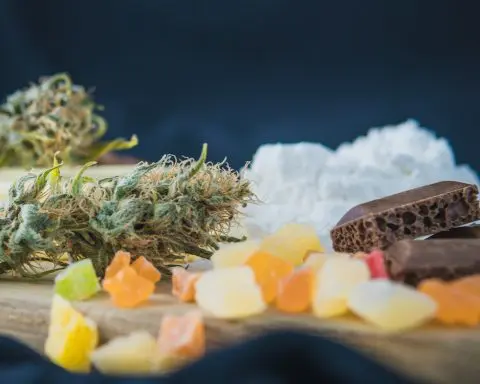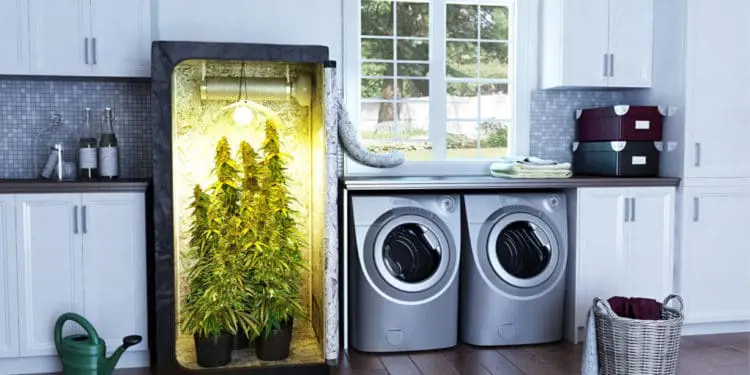Cannabis is strongly aligned with the green movement. Unfortunately, most of the weed we find in dispensaries, coffeeshops, or on the street is far from “green.” Just like other crops, cannabis is usually grown with chemical fertilizers, pesticides, herbicides, bloom boosters, and more. Here’s our guide to grow a sweet healthy ganja (and survive the shortage).
If you’re worried about the impact your love for weed is having on the environment or your health, you’re in luck.
In this article, I’ll share my tips for growing your own organic weed at home using natural soil amendments, compost teas, organic pest control, and more.
Creating Your Own Super Soil
Healthy soil is the key to healthy plants and great harvests.
In nature, plants get all their nutrients from topsoil, which is made up of decomposed organic matter and millions of beneficial microorganisms. When growing organically at home, your focus should be on creating that same kind of rich soil using natural ingredients, rather than pumping your plants full of chemicals.
Below I’ll share a simple recipe for creating your own organic super soil that’ll give your plants everything they need to develop great foliage and delicious buds:
1 Start with 3 parts organic starter soil. I recommend using ProMix HP because it’s been used by countless cannabis growers for years and contains mycorrhizae, a type of fungi that helps your plants absorb more nutrients. ProMix Potting Mix also works well, as will any other organic potting mix you can find at your local gardening store.
2 Next, you’ll want to enrich your soil with the following ingredients:
- 1 part perlite.
- ½ part vermiculite for water retention.
- 1 part worm castings.
- 65g dolomite lime. This is a natural fertilizer rich in calcium and magnesium and helps regulate soil pH.
- 65g fishbone meal, which is rich in phosphorus and calcium to boost your plants’ vegetative growth.
- 45g organic guano, a plant superfood derived from bat feces that’s rich in macro and micronutrients.
- 30g Epsom salts to help boost nutrient uptake and chlorophyll production in your vegging plants.
Note 1: Dampen your soil and let it sit for 1-2 days to activate it before planting.
Note 2: Never plant seeds or seedlings directly in this soil. Instead, let your seedlings mature in a light soil made of 50% peat moss and 50% vermiculite for about 2 weeks before transplanting them to your super soil.
Feeding Cannabis Plants With Organic Compost Tea
The super soil we described above will provide your plants with a steady flow of nutrients throughout their entire life cycle. However, you can use compost teas to keep your soil life healthy and boost the growth of your plants even further.
There are countless compost tea recipes on the internet. For beginners, however, I recommend following this basic recipe:
- 20l of water (if you’re using tap water, let it sit for 24 hours to help evaporate chlorine)
- 250g compost
- 1 tablespoon molasses
- 1 tablespoon liquid kelp
- 1 teaspoon fish hydrolysate
To brew your tea, you’ll need a 20l bucket and an air pump or airstone to oxygenate the water, which further helps evaporate chlorine and supports the life of the microorganisms as your tea brews.
Let your pump aerate the water for 2-3 hours, then combine your ingredients in a nylon sock or mesh bag and let them brew for 24 hours. Don’t brew your tea any longer than this or you’ll create a breeding ground for bad bacteria like salmonella and E.coli.
When feeding your plants, use 1 cup (120ml) of tea for every liter of water. Remember to use your tea within an hour after brewing, as it will lose activity over time. I recommend feeding plants with compost tea 2-3 times a week.
Fighting Pests And Disease Organically
Growing organically doesn’t mean you’ll be defenseless against pests or diseases. Some of the best natural pest/disease control measures to protect your cannabis plants include:
- Compost tea. That’s right, the same tea you use to feed your plants is also great at staving off predators and diseases. For best results, dilute 1 part tea in 2 parts water and douse your plants liberally. You’ll need multiple applications to treat infected/sick plants.
- Beneficial insects. Spiders, predator mites, ladybugs, and lacewings are great for pest control. Check your local garden superstore for mites and friendly insects.
- Neem oil. Neem oil is a natural pesticide and fungicide that deserves a spot in every garden.
Remember, growing organically is all about recreating a naturally vibrant soil. And while it might seem overwhelming at first, follow the instructions above and you’ll be harvesting your own, home-grown organic weed in no time.












